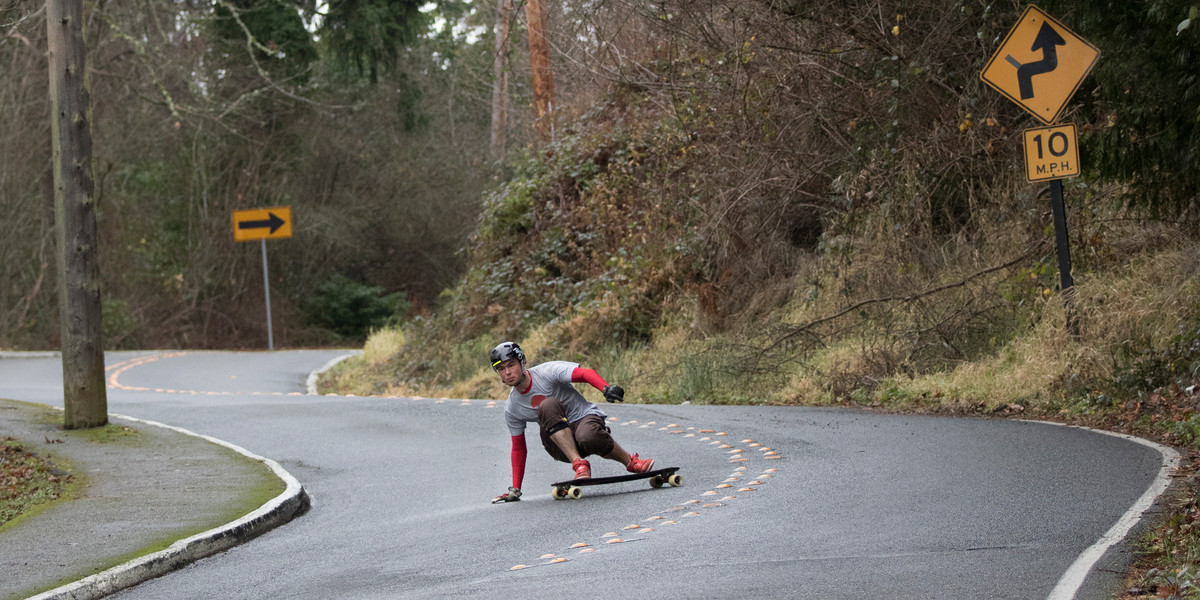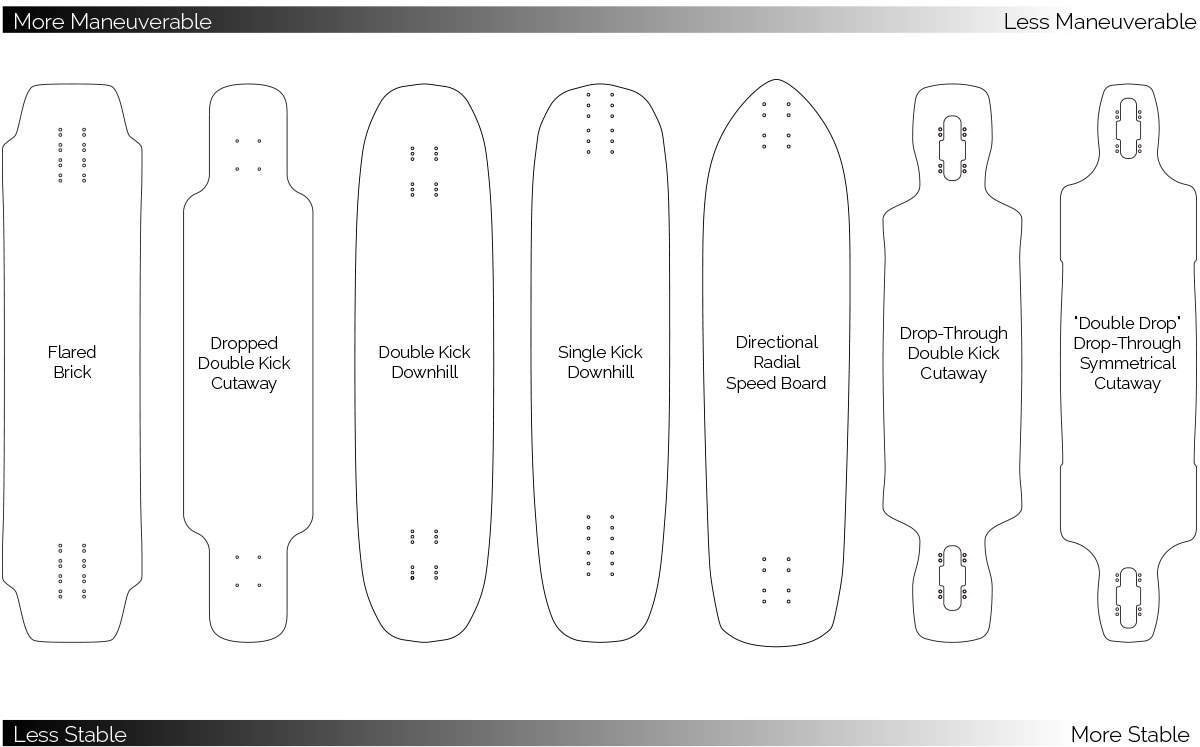Freeride and Downhill Buyers Guide


Choosing the right longboard skateboard can be a confusing and difficult process. There are a wide variety of shapes, flexes, designs, and sizes to choose from. A good longboard should be customized to fit your riding style, weight, and desired characteristics. This guide is meant to be simple “how to buy a longboard” guide for first time riders trying to choose the right board.

Choosing a Freeride Or Downhill Longboard
Flared Brick: This shape is great for riders looking for a short wheelbase and standing platform with ample wheel clearance. A perfect freeride set up for topmount lovers who like a small responsive board.
Double Kick Cutaway: Upturned nose and tail offer opportunities for freestyle tricks while the “cutway design” helps prevent wheel bite. These boards can run the gamut from cruiser designs to freestyle or freeride. Best for intermediate or advanced riders.
Double Kick Downhill: This shape is a hybrid between a downhill oriented top mount and a traditional skateboard. Lower wheel clearance than a flared brick but better concave, nose, and tail for adding some ollies and tricks to your standard raw run.
Single Kick Downhill: A lot like the double kick downhill without the weight or functionality of a nose. Perfect for those looking for a killer downhill or freeride setup but still need a good tail.
Directional Radial Speed Board: Radical concave and directional shape make a blank canvas for downhill riders. A classic, minimal design much loved by intermediate to expert riders.
Drop-Through Double Kick Cutaway: Lowered riding platform makes these boards easy to push for beginners or commuters. Kicktails offer opportunities for tricks or kick turns. Cutaway design helps reduce wheelbite. Drop through mounting decreases maneuverability but may feel more stable at moderate speeds for some riders.
Drop-Through Symmetrical Cutaway: Lowered platform is great for pushing. Cutaway design eliminates wheel bite. Drop-through mounting reduces maneuverability but may feel more stable at moderate speeds for some riders. Great board for first time riders.
Choosing the Right Size & Flex
Size and flex are a critical decisions when finding the right board for you. Like yin and yang, peanut butter and jelly, and any other delicate balance there is no absolute right answer, you need to determine your personal preference between, flex, weight, and physical size and find the right board for you.
Flex (layup): The “layup” (physical materials) that give a board it’s structure combined with the shape profile of a board determine the amount of flexibility in the deck. Boards with more flex are generally lighter in weight and thinner. The spring from a flexy board can be great for absorbing vibration or adding a bit of energy to your carve. Stiffer boards are perceived as more stable and offer more responsive turning, ideal for higher speeds and more technical maneuvers. For new riders looking for a good Downhill or Freeride board we‘d recommend a stiff board over a flexy one.
Size: Board Length and width should be an important factor when selecting your longboard. Shorter boards with short wheelbases will have a smaller turning radius and turn quickly while longer boards will have larger turning radius’ and turn more slowly. For beginners longer boards with less maneuverability may be easier to balance on and ride. For Downhill and freeride boards we’d recommend a longer wheelbase if you will be riding at high speed, and a shorter wheelbase if you need greater maneuverability. Your standing platform should be based on your height and shoulder width.

Still not sure?
These guides are meant to be a recommendation, but not the rule. There are plenty of special cases and exceptions that may lead you to veer off of our standard recommendations.
If you are every in doubt, make sure to drop us a line via chat, email, or phone.